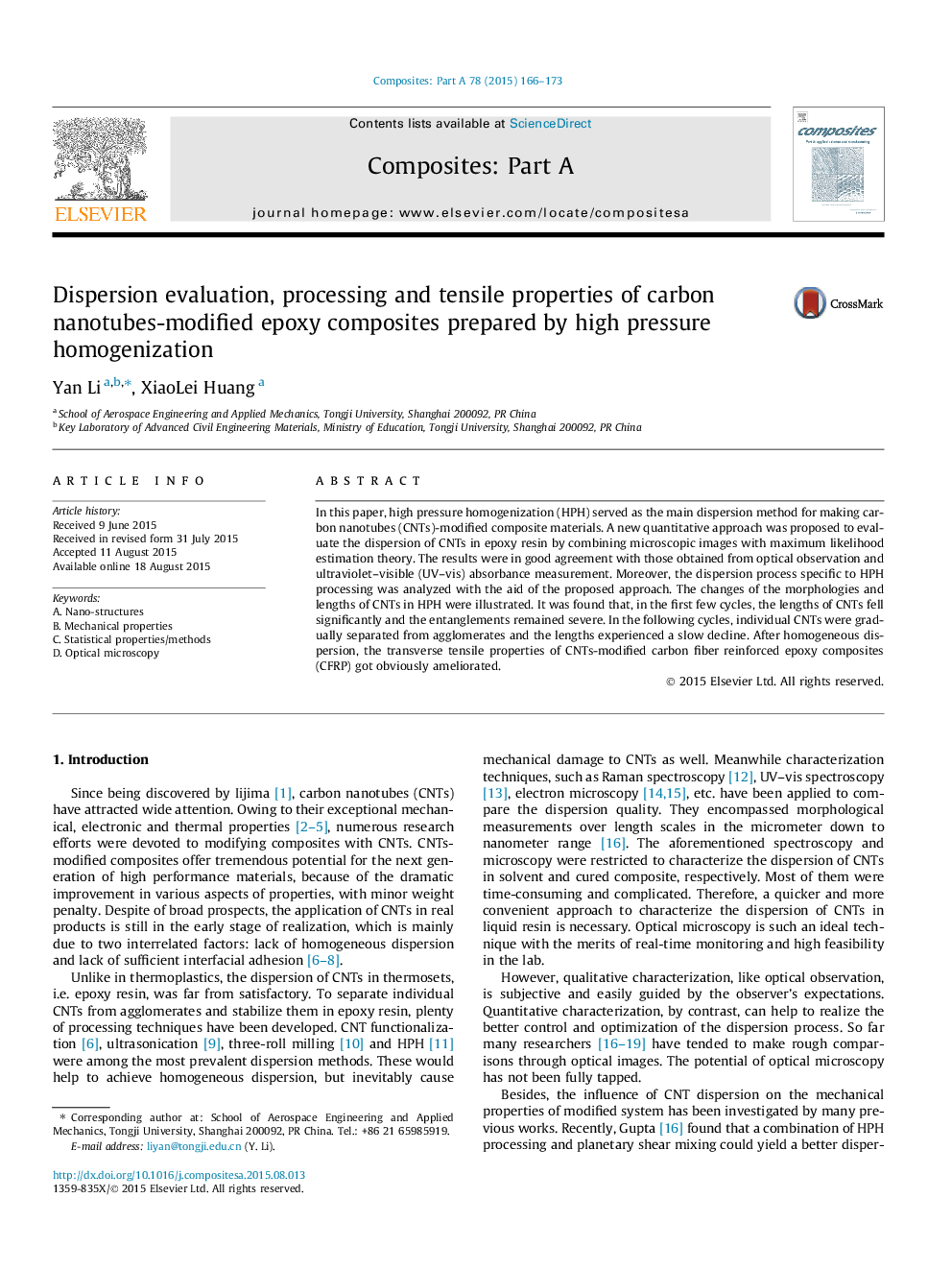| Article ID | Journal | Published Year | Pages | File Type |
|---|---|---|---|---|
| 1465901 | Composites Part A: Applied Science and Manufacturing | 2015 | 8 Pages |
In this paper, high pressure homogenization (HPH) served as the main dispersion method for making carbon nanotubes (CNTs)-modified composite materials. A new quantitative approach was proposed to evaluate the dispersion of CNTs in epoxy resin by combining microscopic images with maximum likelihood estimation theory. The results were in good agreement with those obtained from optical observation and ultraviolet–visible (UV–vis) absorbance measurement. Moreover, the dispersion process specific to HPH processing was analyzed with the aid of the proposed approach. The changes of the morphologies and lengths of CNTs in HPH were illustrated. It was found that, in the first few cycles, the lengths of CNTs fell significantly and the entanglements remained severe. In the following cycles, individual CNTs were gradually separated from agglomerates and the lengths experienced a slow decline. After homogeneous dispersion, the transverse tensile properties of CNTs-modified carbon fiber reinforced epoxy composites (CFRP) got obviously ameliorated.
